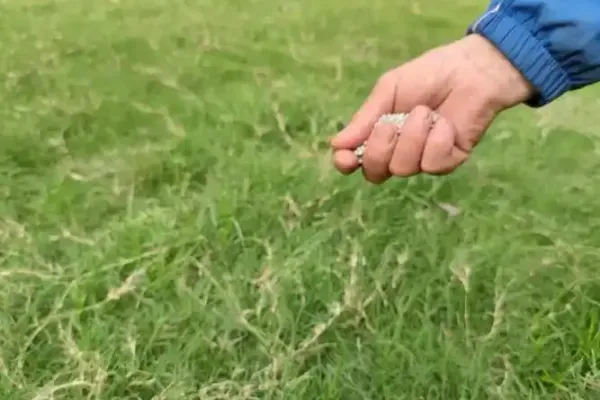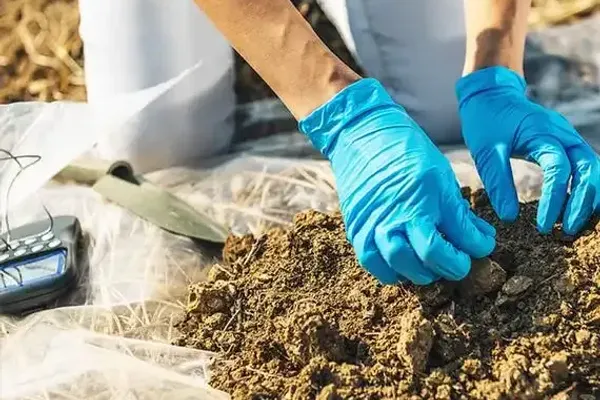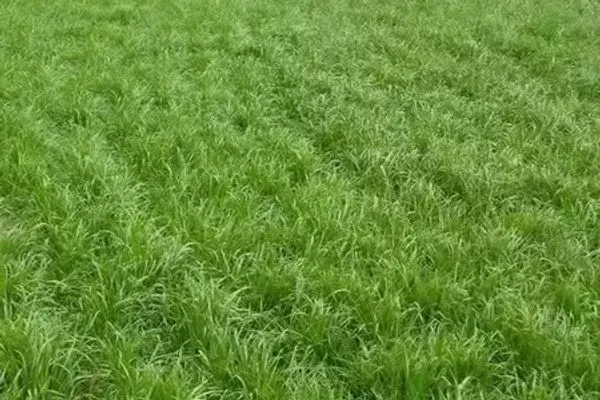Avoid your inquiry is delay response, please enter your WhatsApp/Skype along with the message, so we can contact you at the very first time.
We will reply you within 24 hours. If for urgent case, please add WhatsApp/WeChat:
Warning: Undefined variable $public in /www/wwwroot/lvfertilizer.com/wp-content/themes/hyhadmin/header.php on line 350
Warning: Trying to access array offset on value of type null in /www/wwwroot/lvfertilizer.com/wp-content/themes/hyhadmin/header.php on line 350
,. Or call
Warning: Undefined variable $public in /www/wwwroot/lvfertilizer.com/wp-content/themes/hyhadmin/header.php on line 350
Warning: Trying to access array offset on value of type null in /www/wwwroot/lvfertilizer.com/wp-content/themes/hyhadmin/header.php on line 350
directly.
Patchy lawn? Slow plant growth? We fix nutrient timing. Use the right nitrogen fertilizer at the right time to help your lawn recover fast and stay healthy.
Use nitrogen on grass when your lawn is actively growing. For cool-season grasses, fertilizing lawns works best in early fall and late spring. For warm-season turf, apply in late spring through summer. Always follow a soil test, the rate of nitrogen per 1,000 sq ft, and your grass type to avoid pushing too much nitrogen.
Timing matters because nitrogen powers plant growth. For a lawn that you want to keep thick and green, apply fertilizer when the grass is ready to take up the nutrient. That’s your “time to fertilize.” In simple terms, feed during the growing season, not when grass is dormant in the winter. This protects soil health and encourages deep root growth for healthy lawns.
When your spring lawn wakes up, many homeowners want to apply something right away. Hold back a little. A light spring application may be fine, but the heaviest feeding for cool-season turf generally comes in fall. If you want to apply a quick green-up, choose a balanced, water-soluble option such as a balanced 20-20-20 lawn fertilizer and follow the label. Try this internal guide to options: balanced 20-20-20 water-soluble lawn fertilizer.

What is the best time to fertilize a lawn with nitrogen?
Cool-season grasses are actively growing in spring and fall, so fertilizer application should fit those windows. A typical amount of nitrogen per year is split into several nitrogen applications. In late spring, a light feed supports steady plant growth. In early fall, a higher feed helps grass roots store energy. In late fall, a final, modest feeding can winterize your lawn for next spring.
Warm-season turfgrass (like bermuda and zoysia) grows best in warm weather. The main window is late spring through summer. Avoid heavy feed when temperatures are cool, since fertilizer is needed only when lawns actively grow. For fast response on warm-season lawns, some choose a high nitrogen fertilizer—see high nitrogen fertilizer for quick green-up. Always match the rate of nitrogen to your lawn area.
Most plans talk in pounds of nitrogen per 1,000 sq ft. How much nitrogen you apply depends on grass type, climate, and soil test results. Apply small, even doses through the year instead of one heavy pass. This helps the lawn absorb the nutrient and reduces runoff.
As a rule of thumb, space out nitrogen applications during the growing season. If you use granular fertilizer products, water them in after application unless the label says otherwise. For a wide menu of options you can tailor to your needs (including organic fertilizer choices and standard blends), explore our NPK compound fertilizer options.
Every bag of fertilizer shows three numbers (N-P-K). They stand for nitrogen, phosphorus, and potassium. The higher the first number, the more nitrogen. Your type of fertilizer should be based on grass type, season, and soil test. For many common lawn routines, a classic balanced blend like 10-10-10 NPK for common lawn feeding is flexible and easy to use.
Fertilizer that contains slow-release nitrogen provides steadier color and less surge growth. Fast-release sources act quickly but can stress the lawn if overused. For new or weak lawns, consider a formula with some phosphorus (only where allowed and where a soil test indicates a need), and adequate potassium for stress tolerance.
Use this simple calendar to guide applying nitrogen on your lawn:
| Season Window | Cool-Season Lawns | Warm-Season Lawns |
| Late Spring | Light feed to support steady growth | Begin main feed as turf warms |
| Early Fall | Primary feed for strong roots | Reduce feed as growth slows |
| Late Fall | Final light feed to winterize your lawn | Usually stop; grass goes dormant in the winter |
If you maintain turf in regions with long summers, a custom blend can help. Many distributors choose bulk blending fertilizer to match local soils and water. See bulk blending fertilizer for regional nutrient profiles. Remember: nitrogen to your lawn should be split into small doses, timed to growth, not the calendar alone.
A soil test is the smartest first step in lawn care. It tells you whether phosphorus or potassium are low and how much fertilizer your lawn really needs. If pH is high or low, fertilization alone won’t fix it; you may need amendments. Your local cooperative extension or extension office can explain how to read results.
When pH adjustment or sulfate is needed, many managers use ammonium sulfate. It supplies nitrogen and sulfur and can influence pH gradually. Review options here: ammonium sulfate for turf and soil pH. Balanced programs, not just nitrogen, keep lawns thick, resilient, and ready for stress.

Soil test
Too much fertilizer can cause thatch, lawn disease, and weak grass. Overfeeding in spring can also invite crabgrass and dandelion pressure. For effective weed control, time feedings wisely and mow at the right height. If you use a weed and feed, apply it only when the label allows and only where weed pressure warrants it.
If you see surge growth after feeding, you may be pushing too much nitrogen. Use moderate doses and consider slow-release sources. In summer, raise the mow height to protect grass roots. For a flexible water-soluble option in late spring or summer, many managers like 15-15-30 water-soluble formula for late spring and summer.
Schedules vary based on grass type:
Warm-season lawns benefit from nitrogen during warm months, not when dormant in the winter. For cool-season fescue, favor fall. If you manage several regions or blends, our team can supply private-label fertilizer products and OEM support: learn more about our role as a fertilizer supplier and OEM partner.
If you want tailored blends or region-specific packages, see our menu of NPK compound fertilizer options. For quick response, some pros choose nitrogen fertilizer in soluble form, such as high nitrogen fertilizer for quick green-up.
Table: Sample timing by grass category
| Grass Category | Main Feeding Windows | Notes |
| Cool-season (e.g., fescue) | Early fall (primary), late fall (light), late spring (light) | Strong fall feeds build roots and a green lawn next season. |
| Warm-season (bermuda, zoysia, centipede) | Late spring through mid-summer | Keep doses moderate to prevent surge growth. |
For a balanced water-soluble feed during active growth, try balanced 20-20-20 water-soluble lawn fertilizer.
A distributor serving mixed climates split the year into three light feedings and one heavier fall feeding for cool-season lawns. They used a slow-release nitrogen fertilizer in fall, a balanced soluble in late spring, and a small spring fertilizer to wake up color. The result: thicker lawn, fewer weed issues, and less runoff. If you manage multiple regions, our BB blending line lets you dial in custom N-P-K for each market: bulk blending fertilizer for regional nutrient profiles.
For sports turf, schedule small, frequent feedings during the active season. Keep an eye on mowing height and irrigation. If you use a weed and feed, make sure the label fits your turf species. For a quick in-season pick-me-up, a soluble nitrogen source—paired with potassium in hot weather—can stabilize color. Explore options in NPK compound fertilizer options.

Light commercial tip for turf managers
We’re a leading manufacturer and exporter of high-quality fertilizer with OEM and private-label service for distributors and brands. We assemble programs for lawn maintenance that include slow-release nitrogen, balanced N-P-K, and weed control add-ons where permitted. If you need predictable logistics, consistent granulation, and packaging flexibility, we can help your lawn segment grow.
For quick-dissolving mixes that feed evenly, see our water-soluble line, including balanced 20-20-20 water-soluble lawn fertilizer and in-season boosters such as high nitrogen fertilizer for quick green-up.
When is the best time to apply nitrogen to your lawn?
Apply when the lawn is actively growing. Cool-season lawns shine in fall with a lighter spring application. Warm-season lawns feed from late spring to mid-summer. Always follow the rate of nitrogen per 1,000 sq ft.
Should I use slow-release or fast-release nitrogen?
Slow-release helps avoid surge growth and supports steadier color. Fast-release sources act fast but can burn if overapplied. Match the type of fertilizer to season and label directions.
Can I use weed and feed every time?
No. Use weed and feed only when weed pressure is high and the label fits your grass species and timing. Overuse can stress the lawn.
What should I do for newly seeded lawns?
Starter blends support newly seeded lawns. Where allowed and indicated by a soil test, a small phosphorus component may help early root growth. Water gently and mow only when the grass reaches the right height.
How do I read the fertilizer bag?
Look for three numbers (N-P-K) on the fertilizer bag. They show nitrogen, phosphorus, and potassium percentages. Choose blends based on grass type and season.
Who can help me plan my lawn fertilization?
Your local cooperative extension or extension office offers region-specific advice. For supply, blends, and OEM options, we provide custom fertilizer products sized to your lawn program.